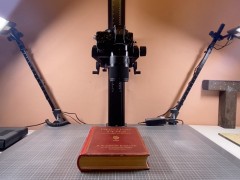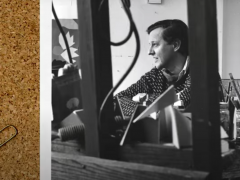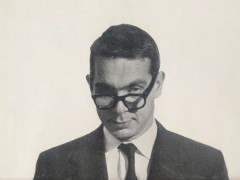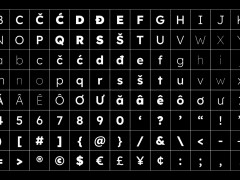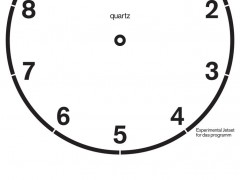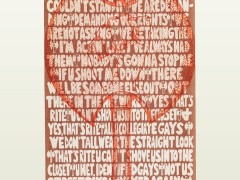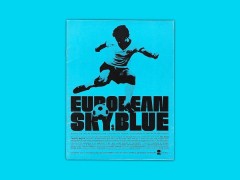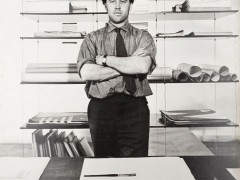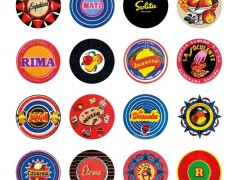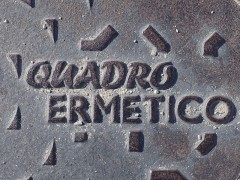In Memoriam: Jacques Villeglé (1926-2022)
Instrumental in bringing the massive urban streetscape into the established art scene via torn posters and a figure who has largely influenced numerous contemporary artists, the acclaimed French artist, and affischiste Jacques Villeglé passed away.
His death was announced in a statement posted to social media on Tuesday by the Paris-based Galerie Georges-Philippe & Nathalie Vallois, which represents Villeglé.
“It is with great sorrow that we are announcing the passing of our dear Jacques Villeglé. His last moments were like the Winston Churchill quote he chose to illustrate his next exhibition in Saint-Malo: Happy are the painters for they shall not be lonely. Light and colour, peace and hope, will keep them company to the end, or almost to the end, of the day” reads the Instagram post.
“Considered the father of street artists, he declared: All of my work is about this eruption of the street into the museum. Working hard, smiling always, Jacques Villeglé has become a main figure of Contemporary Art since his first show in 1959.”
Arguably the last living hero of Nouveau Réalisme, the seminal French avant-garde movement of the 20th century he lived and breathed the urban spirit of Paris, reconstructing the free street spirit through “décollagisme.”
Born in 1926 in Quimper, France, he initiated his “sociopolitical alphabet” aka a language system built using heavily stylized letters with leftist underpinnings during the uprisings of May 1968, a period of civil unrest that occurred throughout France and punctuated by demonstrations, general strikes, as well as the occupation of universities and factories in seven weeks of massive revolts that reclaim of power to the people.
His unconventional art gained momentum beyond his home country when Villeglé’s work was included in MoMA’s “The Art of Assemblage” exhibition.
“Thanks to the almost exclusive use of torn posters, this pioneer of urban art leaves an abundant body of work of astonishing formal richness,” the Centre Pompidou wrote on Twitter -the museum staged a retrospective of Villeglé’s work in 2008.
“Jacques Villeglé has elevated the aesthetics of the slashed poster to the rank of the greatest works,” wrote Minister of Culture Rima Abdul Malak in her tribute.
“The torn layers of words, faces, and colours were for him the raw expression of the present, delivered to the interpretation of each one to mend poetically the chance” she added.
Having gained international stature, this “master of public space, seismograph of urban environments, had a modest and generous personality.”
“To be surprised is a happiness,” he wrote in 2009 on a wall in his signature rebellious alphabet. For Villeglé the city served as a canvas, the deteriorated posters across its landscape served as materials for a bigger-than-life piece of art that compiles a nation’s memory through images and texts. Deciphering his extraordinary poster art will be an enigma “as contemporary and daring as ever.”
“When I became interested in posters, we were coming out of the war. It wasn’t a question of consumption. The crisis was due to the lack of building materials” he told Forbes. “Railway accidents were common, as the equipment often dated from before the 1920’s financial crisis. The black market persisted. I date the beginning of consumer society starting from 1964. I wasn’t trying to criticize society, but to illustrate it in an original way. While I was interested in abstract painting, I regretted that nothing from everyday life could interest artists. I knew the history of the evolution of posters and had noticed that designers-creators took pleasure in working on their compositions, drawing inspiration from those of Cubist painters, among other things. This parallel didn’t displease me.”
Presenting the relevant and rebellious spirit of his, Modernism presents its eighth in-depth survey of décollage works by Jacques Villeglé. The exhibition (open to the public till July 1, 2022) also marks the release of “Jacques Villeglé and the Streets of Paris” by Barnaby Conrad III, the first comprehensive book on Jacques Villeglé in English.
“In seizing a poster, I seize history. What I gather is the reflection of an era” said this true flâneur who roamed through a war-torn Paris with endless curiosity.
“As I walked through the streets, I was struck by the color and typography of the posters. In those days, the cinema and concert posters rarely had images—just words—and they had been torn and shredded to where they became something else, with a post-cubist look to them. I began to see them as paintings made by anonymous hands” he said.
“In 1949, Villeglé and his then artistic collaborator, Raymond Hains (1926–2005), scavenged advertising from billboards on the grand boulevards, snatched political posters in the financial district and pillaged Left Bank walls plastered with flyers for jazz concerts and art exhibitions” reads Modernism’s press release.
“Mounting them on canvas, they presented a new kind of art. Between 1949 and 2003, Villeglé himself plucked more than 4,500 works from all twenty of Paris’s arrondissements, carefully labeling each with the exact date and street address of the heist, just as a lepidopterist might record the habitat of a newly captured butterfly. Each work became a unique time capsule of the ever-changing city.”
“Right from the start,” he wrote, “I anticipated that the eventual output of this series would surpass the production of the most imaginative of my generation’s painters and that my a priori determination to focus on the oeuvre of a diffuse collectivity would give me greater freedom than any achieved by the artist facing a blank canvas.”
“Villeglé was an archivist using anonymous crowdsourcing to create art. In his extensive writings and interviews, Villeglé portrayed himself as a medium for the faceless genius of the Lacéré Anonyme, the anonymous lacerator whose restless hands tore and reshaped the posters into something different” writes Modernism. “What I like above all about posters is the disorder,” he once stated.
Using his knife “the artist captured the DNA of daily life in Paris, preserving it forever” with raw materials found on the street. His radical art approach made him a central figure in the Nouveaux Réalistes, a group of artists such as Yves Klein, Pierre Restany, Arman who used real objects and industrial materials to make art.
“Paris contains some six thousand streets, ranging from grand boulevards to medieval alleys, each expressing architectural quirks, social class, and the personalities of its residents. Today, the titles of Villeglé’s artworks are a poetic roll call of Paris’s street names” notes Modernism.
“Sometimes I wandered through quartiers I didn’t know well and would get lost. And then I would see something on the wall. When I was attracted to an image or to an abstract shape or color, I acted very fast. Impulsive but precise action is what counted. Hard to describe it, but you just know when you’ve got something good” he said.
“I realized right from the start that lettering would change, that new colors would be developed, that photography would be employed someday. Electric blue didn’t exist, for instance. So right from the beginning I saw this material would be historic and would constitute an archive, a ragged memory of our era.”
The book “Jacques Villeglé and the Streets of Paris” by Barnaby Conrad III, published by Modernism Inc. (San Francisco) and Inkshares (Oakland) is a hardcover monograph of 260 pages, with over 200 color images of Villeglé’s art, as well as 170 vintage photographs of the artist, his intellectual circle, post-World War II political figures, and the streets of Paris.
Villeglé was 96 yo.
Tags/ typography, exhibition, alphabet, book, street art, poster, text art, france, paris, avant-garde, jacques villegle

